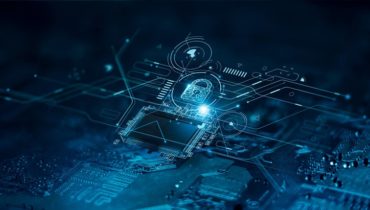PCs have become an essential piece of the present reality. They can receive data (input), process the data guided by predetermined rules, produce relevant information (yield), and store it.
It’s difficult to try and envision the current world without the utilization of computers. People use these devices for a vast range of activities, from seeing motion pictures and playing games to embodying sophisticated work projects.
Yet, not everyone knows the intricacies of a computer structure. In this brief article, students will learn how to navigate different computer elements. The following section takes a gander at its basic components: hardware and software.
Hardware
Hardware refers to the physical components of a computer. It comprises all the touchable parts and is categorized into three types: input devices, a system unit, and output devices.
Input Devices
These are the various components that aid a user in inputting data. Their core function is to translate the commands that users can understand to signals that a computer can understand. Read on about the examples of the input devices.
Keyboard
The keyboard is built based on the typewriter. It uses an arrangement of buttons to input data into a computer. The controls are called keys arranged in a QUERTY form, just like in typewriters.
A keyboard serves as the primary input device in a system, which makes it a critical component, whether one uses it to provide essaywritingservice or craft a sophisticated code. All computer keyboards are made up of five main parts. These parts include the following:
• alphanumeric keypad, which contains both number and letter keys. The keys comprise all letters of the alphabet, from A to Z, and the numbers from 0 to 9.
• numeric keypad, which is also referred to as the number pad or the “numpad”. It’s a 17-key segment of a typical PC keyboard. Usually located on the right end, it provides efficacy for inputting numbers.
• arrow keys, which are located at the lowermost part of the keyboard adjacent to the number pad. The keys are in an inverted-T layout. These keys are used to navigate through a document. They are also commonly used in playing PC games.
• control keys, which are modifiers. Used in combination with other keys, they give special input or command.
• function keys are found at the topmost part of the keyboard. They are usually labeled from F1 to F12. They act as shortcuts executing special functions.
Mouse
A PC mouse refers to a hand-held pointing device that is designed to identify two-dimensional movement proportional to a surface. This movement is then converted into a pointer’s activity on a computer monitor, enabling a smooth control of the graphical user interface. The usual activities a user can perform with a mouse are drag-and-drop and point-and-click.
System Unit
The system unit houses the “brain” of a computer and provides the interface for connecting both input and output devices. The system unit consists of two major components: CPU (central processing unit) and memory.
Central Processing Unit (CPU)
A central processing unit is an essential part of a PC. It is in charge of all the roles and processes. In processing speeds, the central processing unit is the most vital element of a computer.
The central processing unit is comprised of three parts:
• arithmetic logic unit (ALU);
• control unit (CU);
• registers.
Memory
Memory is basically where computers store data and information during input, processing, and output operations.
Computer memory may be either primary or secondary. Primary memory is used by the central processing unit in its operations, while secondary memory is employed by the users of a system.
Primary Memory
• RAM: random-access memory refers to a recall in the computer framework responsible for storing data on a transient basis, intending to be promptly acquired by the CPU when required. It is volatile, which indicates that the information is lost once the power supply to the random access memory is interrupted.
• ROM: read-only memory is a permanent storage volume. It retains the data kept away even when the power supply is cut. That means it does not allow stored information to be altered; hence, it is called “read-only”.
Secondary Memory
Secondary memory is also referred to as user memory. It stores computer data and instructions, and the contents are retained and secure even after the power is lost. Examples include hard drives, optical disks, and flash drives.
Output Devices
These are appliances that convert the information processed by computers into a readable form. The processed data is then output for the consumption of the users. Typical examples of output devices are monitors and printers.
Monitor
A computer monitor is an electronic visual display unit that outputs information. The monitor converts electronic signals to a form users can understand. The information is then displayed for the people in a convenient way.
The monitor consists of a screen, circuitry, and an outer protective case. Older monitors were made with the help of the cathode-ray tube technology. However, modern monitors use the LCD (liquid crystal display) and LED (light-emitting diode) technologies. The new approaches allow people to enjoy a high-quality picture and prevent eye fatigue and headaches.
Printer
A printer is a yield gadget that prints paper reports. This includes text documents and graphics. The two common printers are inkjet and laser printers. The latest gadget that is becoming widely popular due to its versatility is a 3D printer. Such printers are constantly evolving because of their promising functionality.
Software
Computer software, also called programming, refers to instructions that guide the operations of the device. There are two types of program sets: system software and application software.
Takeaway
A computer consists of two equally significant parts—hardware and software. Without each other, both are useless. The hardware is expected to run the software. On the other hand, the software is required for the PC to run and coordinate directions.
Other interesting classifications, however, include liveware as a component of the computer. Liveware is a term that refers to the users interacting with the system.



